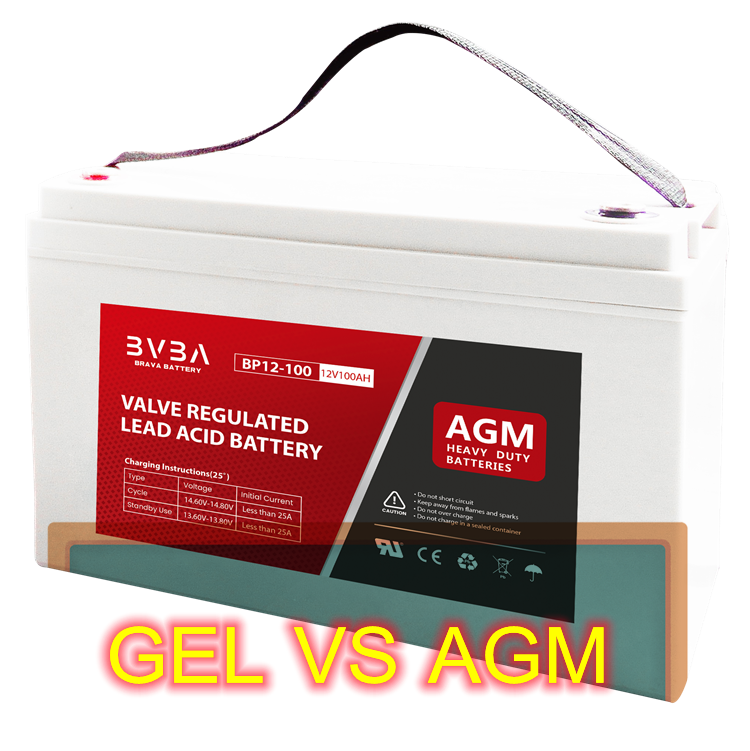A car battery at 10 volts is considered low and potentially dead. The standard voltage for a car battery is around 12.6 to 12.8 volts when the car is not running.
When the voltage drops to 10 volts, it indicates a significant decrease in the battery’s charge, which may lead to difficulties starting the car or failure to start altogether. Regular maintenance and testing of the car battery’s voltage level are crucial to prevent such situations and ensure optimal performance.
We will delve into the effects of low car battery voltage and discuss possible solutions to fix the issue.

Credit: www.amazon.com
Understanding Car Battery Voltage
Car battery voltage plays a crucial role in the overall performance of your vehicle. Whether your car is starting up, running smoothly, or even when it’s turned off – Your automobile battery’s voltage is always at play.
In this section, we will explore the ins and outs of car battery voltage, including what is considered normal, what happens when it drops, and what is regarded as a low voltage.
What Is The Normal Voltage Of A Car Battery?
A car battery’s average voltage can change based on several variables, including the type of battery, the condition of the storm, and the temperature.
However, a fully charged automobile battery should generally have a voltage reading of around 12.6 to 12.8 volts. This voltage indicates that the battery is operating at its optimal level and can deliver the necessary power for your vehicle to start and run smoothly.
What Happens When Car Battery Voltage Drops?
When car battery voltage drops below its normal range, it can lead to various issues that affect your vehicle’s overall performance. A voltage drop may lead to difficulties starting your car, dimming lights, sluggish electrical systems, or even complete battery failure.
This voltage drop can result from several causes, like extended periods of inactivity, extreme temperatures, or a faulty charging system. It is essential to address any voltage drop promptly to avoid further damage to the power source and potential breakdowns.
What Is Considered A Low Voltage For A Car Battery?
A low voltage for a car battery is typically considered anything below 12 volts. When a car battery reaches this low voltage level, it is a sign that it is losing its charge and might be unable to supply the energy required to turn on the vehicle reliably.
It is recommended to have the battery checked and potentially replaced to guarantee the continuous smooth functioning of your car.

Credit: www.bravabatteries.com
Reviving A Car Battery At 10 Volts
When it comes to car batteries, ensuring they are in good working condition is crucial for the optimal performance of your vehicle. However, sometimes unexpected circumstances can lead to a car battery voltage dropping as low as 10 volts. In this blog post, we will discuss the testing of voltage in a car battery, steps to revive a car battery at 10 volts, and the importance of charging a low voltage car battery.
Car battery 11.5 volts
If your car battery measures 11.5 volts, it’s likely running low on charge. A fully charged car battery typically reads around 12.6 volts. Here are a few things to consider:
- Charging the Battery: You may need to recharge the battery. You can use a battery charger or drive your vehicle for a long time to allow the alternator to recharge the battery.
- Battery Health: If the battery continues to discharge quickly after recharging, it may be a sign of a failing battery. Batteries have a limited lifespan; it might be time for a replacement if it’s old.
- Parasitic Drain: Check for electrical parts that could require power even while the vehicle is not running. Faulty wiring or a malfunctioning part can lead to a parasitic drain.
- Electrical System Check: It’s a good idea to have the charging system and electrical System checked by a professional if you continue to have issues. This can help identify problems with the alternator, voltage regulator, or other components.
- Extreme Temperatures: Very cold or hot temperatures can affect battery performance. If you’re in a region with high temperatures, it might impact the battery’s ability to hold a charge.
Suppose you need help troubleshooting the issue. In that case, it’s recommended that a professional mechanic be consulted to diagnose and address the problem. Ignoring a failing battery can leave you stranded, so it’s better to address the issue sooner rather than later.
Testing The Voltage Of A Car Battery
Before attempting to revive a car battery at 10 volts, it is essential to accurately test the voltage. This step will allow you to understand the severity of the battery’s condition and decide on the best course of action. The simplest and most effective way to test the voltage of a car battery is by using a multimeter. Follow these steps:
- Turn off your vehicle and ensure all electrical components are switched off.
- Set the multimeter to the DC voltage setting.
- Connect the multimeter’s black probe to the battery’s negative terminal (-) of the battery.
- Attach the multimeter’s red probe to the battery’s positive terminal (+).
- Read the voltage displayed on the multimeter. This will provide an accurate measurement of the battery’s voltage.
Steps To Revive A Car Battery At 10 Volts
Reviving a car battery at Charging a low-voltage car battery is essential for several reasons. Firstly, it allows you to avoid the inconvenience of a dead battery and potential vehicle breakdown. Additionally, charging a low-voltage battery helps preserve its lifespan and maintain its health. Neglecting to charge a low-voltage battery can lead to irreversible damage, reducing its capacity and ultimately requiring a replacement. requires careful attention and adherence to the following steps:
- Inspect the battery: Look for any indications of physical damage or corrosion. Clean the terminals if necessary.
- Charge the battery: Connect the battery to a compatible charger and follow the manufacturer’s instructions for charging a low-voltage battery.
- Avoid overcharging: Monitor the charging process closely and ensure you do not overcharge the battery, which can cause damage.
- Perform a load test: After charging, perform a load test to ensure the battery holds its charge and can deliver sufficient power to start your vehicle.
- Maintain regular maintenance: To prevent future voltage drops, Maintain your automobile battery regularly by examining its voltage, keeping terminals clean, and replacing it as needed.
- Reviving a car battery at 10 volts requires careful attention and adherence to the following steps:
Importance Of Charging A Low Voltage Car Battery
Charging a low voltage car battery is essential for several reasons. Firstly, it allows you to avoid the inconvenience of a dead battery and potential vehicle breakdown. Additionally, charging a low voltage battery helps preserve its lifespan and maintain its overall health.
Neglecting to charge a low voltage battery can lead to irreversible damage, reducing its capacity and ultimately requiring a replacement.
By following the above steps and regularly maintaining your car battery, you can effectively revive a battery at 10 volts and ensure optimal performance for your vehicle’s smooth operation.
Optimizing Car Battery Performance
A car battery is an essential component of any vehicle, providing the necessary power to start the engine and operate electrical systems. To ensure your car battery performs at its best, it is imperative to maintain the proper voltage. In this article, we will discuss important tips for optimizing car battery performance.
Maintaining The Proper Voltage Of A Car Battery
Maintaining the proper voltage of your car battery is crucial for ensuring its longevity and optimal performance. The ideal voltage for a car battery is around 12.6 – 12.8 volts when the vehicle is not running. This voltage ensures that the battery is fully charged and ready to provide power when needed.
To check the voltage of your car battery, you can use a multimeter. Simply connect the positive (red) probe to the positive terminal of the battery and the negative (black) probe to the negative terminal. The multimeter will display the voltage, allowing you to determine if your battery requires charging or replacement.
Avoiding Activities That Drain The Battery
There are certain activities that can drain your car battery and reduce its overall performance. By being aware of these activities, you can prolong the life of your battery and prevent any unexpected breakdowns. Here are some common activities to avoid:
- Leaving lights, radio, or any other electrical device turned on when the engine is off
- Using electronic accessories excessively while the engine is not running
- Leaving the car parked for extended periods without driving or starting the engine
By being mindful of these activities, you can prevent unnecessary strain on your car battery and ensure it remains in optimal condition.
Utilizing A Car Battery Charger For Optimal Performance
Suppose your car battery voltage drops below the recommended level. In that case, a car battery charger can be a valuable tool for recharging it. A car charger is designed to deliver a steady charge to the battery, returning it to its optimal voltage and performance.
Following the manufacturer’s instructions and safety precautions is essential when using a vehicle battery charger. Attach the charger to the terminals of the batteries And choose the appropriate charging mode according to your battery type. Additionally, it is recommended to Charge the battery in a place with adequate ventilation to prevent the buildup of potentially harmful gases.
Utilizing a car battery charger when necessary guarantees that your battery stays in optimal condition and prolongs its lifespan. Optimizing car battery performance is essential for a reliable and hassle-free driving experience. By maintaining the proper voltage, avoiding activities that drain the battery, and utilizing a car battery charger when needed, you can ensure that your battery delivers consistent power and remains in good health. Remember, a well-maintained car battery provides efficient performance and minimizes the risk of sudden breakdowns and costly replacements.
Optimizing car battery performance is essential for a reliable and hassle-free driving experience. By maintaining the proper voltage, avoiding activities that drain the battery, and utilizing a car battery charger when needed, you can ensure that your battery delivers consistent power and remains in good health. Remember, a well-maintained car battery provides efficient performance and minimizes the risk of sudden breakdowns and costly replacements.

Credit: dakotalithium.com
Frequently Asked Questions On Car Battery At 10 Volts
Is 10 Volts Good For A Car Battery?
A car battery should have a voltage of around 12. 6 volts when fully charged. 10 volts is too low and indicates the battery is not in good condition.
How Many Volts Is Too Low For A Car Battery?
A car battery is considered too low when it drops below 10 volts.
At What Volts Is A Car Battery Dead?
A car battery is considered dead when its voltage drops below 12 volts.
What Is A Bad Voltage For A Car Battery?
A lousy voltage for a car battery is typically anything below 10 volts.
Conclusion
To ensure your car’s optimal performance, paying attention to the voltage of your car battery is essential. As discussed in this blog post, a car battery at 10 volts is considered too low and could indicate a problem.
When a car battery drops to this voltage, it may not have enough power to start your vehicle or efficiently run its electrical components.
To avoid being stranded or needing costly repairs, It is advised that you keep an eye on your automobile battery’s voltage. regularly and address any issues promptly.
Remember, a well-maintained car battery with the appropriate voltage will keep you on the road with peace of mind.

I am a technology Specialized . I have experience in Technology, and all types of electronic devices like Battery . So I work on solving these issues and give various tips on these issues
